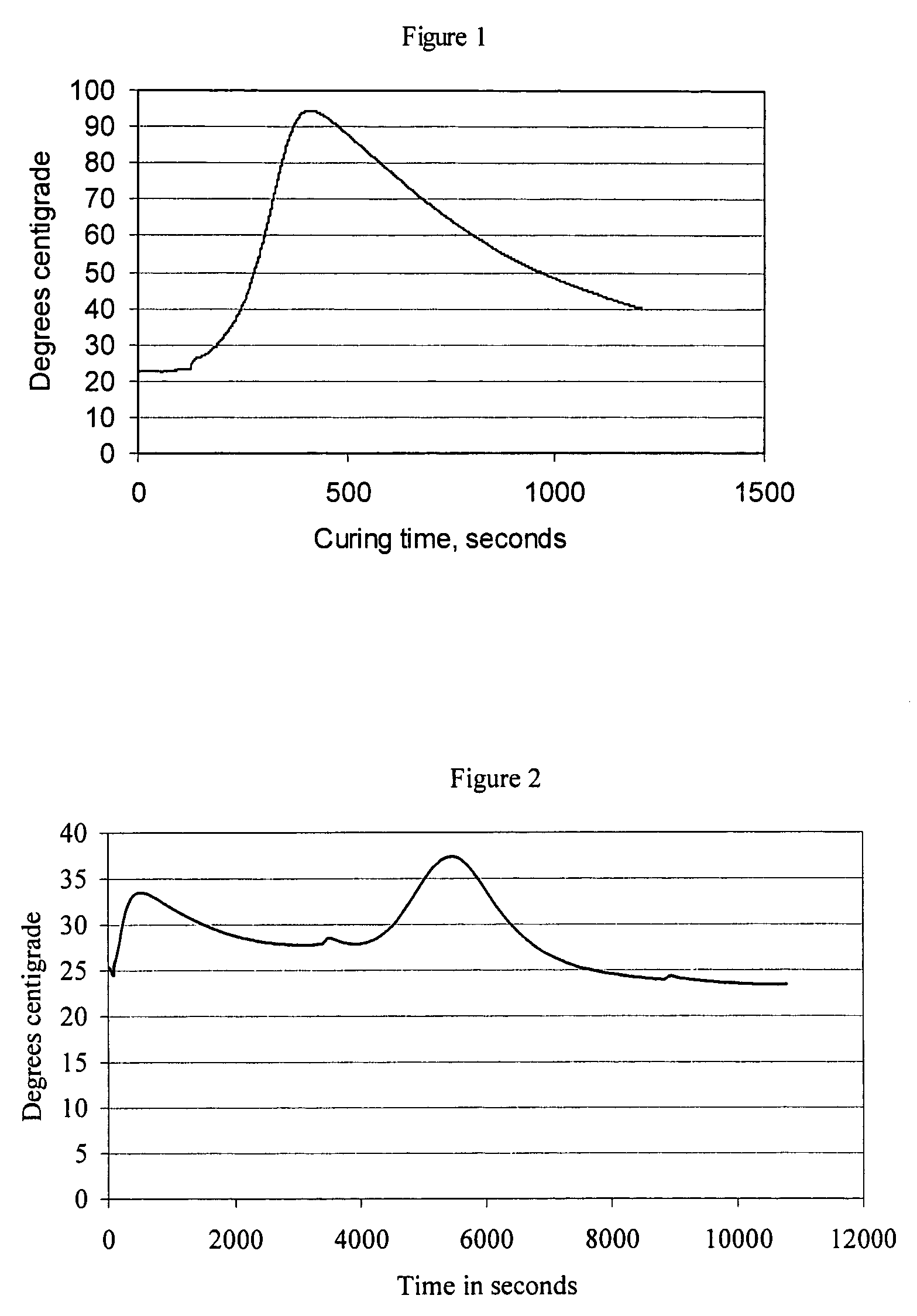Heat generating biocompatible ceramic materials
a biocompatible ceramic and heat generation technology, applied in dental surgery, other chemical processes, prostheses, etc., can solve the problems of no commercialised biocompatible cement, chemotherapy suffers from other side effects, and surgery alone is not enough, so as to achieve low viscosity, low cost, and low cost.
- Summary
- Abstract
- Description
- Claims
- Application Information
AI Technical Summary
Problems solved by technology
Method used
Image
Examples
example 1
[0071]This example describes the manufacturing procedure of a ceramic cement consisting of hydrated calcium aluminate without fillers, and serves to illustrate the effect of hydration rate on the generated temperatures. Note that the achieved temperatures also depend on other factors, such as volume of cured material and heat transportation to the environment.
[0072]As raw material, the commercial product Ternal White® from Lafarge Aluminates, is used. This is a calcium aluminate with an Al2O3 / CaO-ratio of about 70 / 30.
[0073]The first preparation step was to reduce the grain size of the powder. This was achieved by ball milling. The milling was performed with a rotating cylindrical plastic container filled to ⅓ of its volume with Ternal White powder, and ⅓ with inert silicon nitride milling spheres having a diameter of 10 mm. The milling liquid was iso-propanol, and the total milling time 72 hrs. This milling reduced the size of 90% of the grains to less than 10 μm.
[0074]After milling...
example 2
[0079]This example describes the different curing rates typical for calcium aluminates of different phases of calcium aluminate.
[0080]Three different calcium aluminate powders composed to 99% of the pure phases CA, C12A7, CA3 are used as starting materials.
[0081]Powder grain sizes of less than 10 μm were achieved by milling, as described in Example 1. The milled powders were also burnt at 400° C. for 4 hours, to remove any residuals.
[0082]De-ionised water without any additives was used as hydration liquid.
[0083]The prepared powders were mixed with water keeping the ratio of water to powder constant at 0.35, by weight. The powder-water mixtures were cured in 10 ml plastic containers in air at room temperature.
[0084]The hydration rates for the CA, C12A7, CA3 phases, measured as time to solidification, were measured to 4–6 hours, 5–10 minutes and 2–4 seconds, respectively.
PUM
| Property | Measurement | Unit |
|---|---|---|
| temperatures | aaaaa | aaaaa |
| grain size | aaaaa | aaaaa |
| compressive strength | aaaaa | aaaaa |
Abstract
Description
Claims
Application Information
 Login to View More
Login to View More - R&D
- Intellectual Property
- Life Sciences
- Materials
- Tech Scout
- Unparalleled Data Quality
- Higher Quality Content
- 60% Fewer Hallucinations
Browse by: Latest US Patents, China's latest patents, Technical Efficacy Thesaurus, Application Domain, Technology Topic, Popular Technical Reports.
© 2025 PatSnap. All rights reserved.Legal|Privacy policy|Modern Slavery Act Transparency Statement|Sitemap|About US| Contact US: help@patsnap.com

